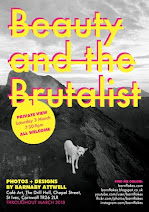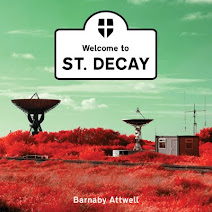If, like me, you don’t have or like Netflix, Amazon Prime or Disney+ (though I occasionally watch them), there are still plenty of places online to watch great – or at least interesting – free films.
Danish film director Nicolas Winding Refn scored a hit with Drive, which I always rename Drivel, but then he made Only God Forgives and The Neon Demon, which were even worse. Anyway – Refn is a collector of obscure old black and white exploitation films. He started restoring them, initially as a hobby, but since 2018 Refn has put them online to watch for free, on his
byNWR.com website.
It's a lovely website and I applaud the intention and execution: divided into volumes with such titles as Smell of Female and You Ain't No Punk, You Punk, with accompanying essays and photos, it's a lovingly curated project of forgotten cult films. My only problem with it is some of the films themselves. Now, I don't mind low-budgets and amateur acting but some of the films are just plain bad. Nevertheless, the director's favourites are certainly not without merit. The most famous film in the collection is undoubtedly Night Tide, a bona fide cult classic, starring a young Dennis Hopper as a sailor who falls in love with a mermaid.
Spring Night, Summer Night, shot in 1969, feels like a Walker Evans or Robert Frank
photo come to life. Set in a small town fallen on hard times in rural Ohio, it tells the scandalous story of a young woman who has an affair with her half brother and becomes pregnant. Lyrical and poignant, the film comes across as a slice of Italian neorealism of a bygone era. There is a great, extended scene early in the film of a Friday night in the crowded local bar that feels like a documentary. Sadly, the film was re-edited soon after its initial release and re-released as an exploitation flick. Refn, and others passionate about the film, lovingly restored the film and it's one of the best on the website.
All you need is a library card to access and watch thousands of free films through
Kanopy, a streaming service provided by your public library or university. From foreign arthouse films like L’Avventura and Wadjda, to great documentaries including The Act of Killing, Kanopy has a fine selection of challenging films. The only caveat is that no more than six films a month can be viewed.
Open Culture, ‘the best free cultural & educational media on the web’, is a blog with links to a huge amount of free culture, including free courses and audio books. It also includes 1150 films, from Hitchcock to Vertov.
UbuWeb is ‘All avant-garde. All the time.’ It features art, magazines, music, sound, writing and a huge section of
film and video, featuring hundreds by and about artists, from Laurie Anderson to Orson Welles. The Internet archive has millions of free books, music and
films, including silents, shorts and home movies.
If you haven’t already, now is the perfect time to get free trials. Aside from the obvious big streamers, it’s worth looking at less well known providers.
Criterion Collection DVDs have an
online channel with over 1,000 classic and contemporary films. Annoyingly, the channel and 14-day free trial seems to be only available in the States. The
BFI Player has a library of free regional archive films, a rental section for recent films plus a subscription service for classic films, which is £4.99 a month, with a 14-day free trial (though if you access the BFI Player through their Amazon Prime
Channel, you get a free 30-day trial).
MUBI has everything from ‘cult classics to modern masterpieces’ and has a 7 days free trial, after which it’s £9.99 a month.
Of course YouTube has billions of free films. Most recently, I’ve enjoyed films from the
Cult Classics channel, including Larry Cohen's
God Told Me To (starring Tony Lo Bianco, also seen in the classic cult film the Honeymoon Killers), Carnival of Souls and Ride in the Whirlwind, to name just a few from the collection of sci-fi, film noir and westerns.
I forget that most people probably own Smart TVs (I still
famously/pretentiously don't own any kind of TV), but if you don't,
there's the BBC iPlayer, ITV and Channel 4, including Film4, online too.
Previously on Barnflakes
Top 30 films on Amazon Prime right now
Lifetime subscription























































